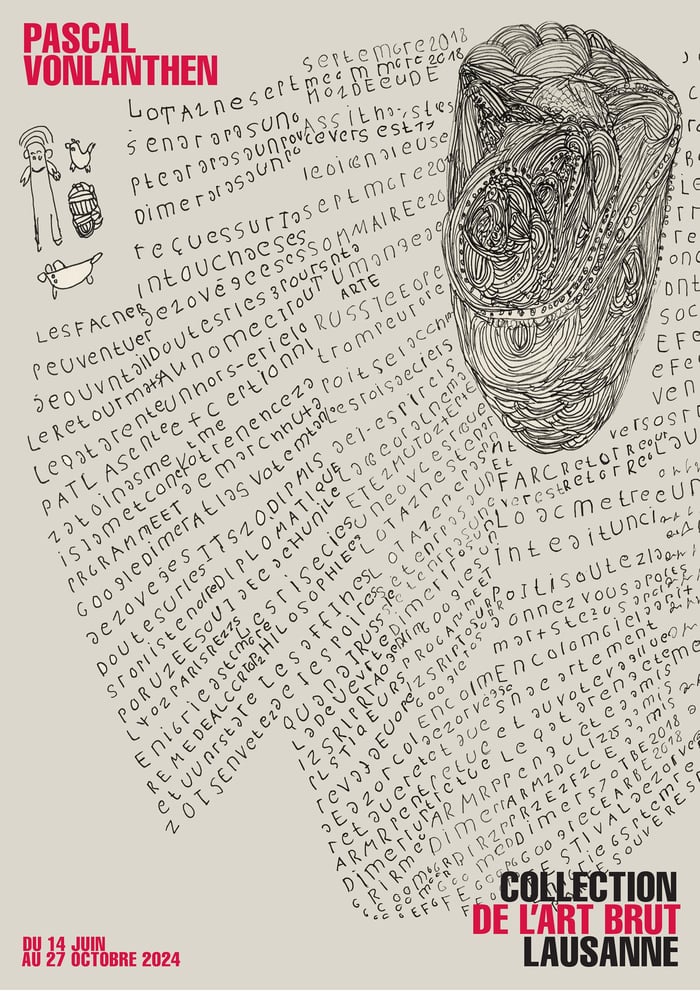Pascal Vonlanthen is fascinated by typefaces and textual arrangement, although he cannot read. In copying text from newspapers, magazines and advertising materials, he produces his own, distinctive take on a language whose codes he cannot decipher. Over the course of a decade, he produced an original body of asemic writings – texts with no syntax but invested with immense formal power.
At first glance, Vonlanthen’s writings bear a certain resemblance to the printed texts on which they are based, as if an article were beginning to take shape on the page. But the eye soon stumbles over inverted letters, jumbled numbers, illogical sequences, endless lines without spaces or punctuation, and individual letters reproduced repeatedly and in an increasingly abstract fashion. In contrast to the rigidity of typefaces, Vonlanthen’s calligraphic writings are stacked in columns and flow across the page like waves. His texts seem to be guided by a kind of flock mentality: the form of each letter influences the next, and each line follows the movement of the previous, producing a pattern reminiscent of starling murmurations. In some cases, abstract, cloud-like masses fill the page. In others, his compositions blend letters and images – animals and embryonic forms – such that the text takes on a figurative significance. His works vary markedly in size and execution, from smaller pieces in black or coloured felt pen to larger productions in marker on wrapping paper or cardboard, including one example on an eight-meter roll.
In an age of mass communication and information overload, Vonlanthen’s writings – with their purely visual elegance and quiet poise – have an irresistible appeal that transcends the boundaries of language.
Vonlanthen (b. 1957) grew up in Rossens, a village nestled in the countryside in the Canton of Fribourg. He has attended CREAHM, an art workshop for people with disabilities, since its foundation in 1998. Vonlanthen’s earliest drawings, produced in the first 15 years of his time as an artist, were inspired by life on the family farm. Executed in pencil or pastel, they featured chickens, cows, rabbits, tools and various utensils arranged in rows like characters in a picture book. In 2014, Vonlanthen began to take a more graphical approach to his art.
In 2020 and 2021, the Collection de l’Art Brut acquired nine pieces by Vonlanthen. This exhibition, the first large-scale, solo show of his works, is accompanied by a documentary produced by Philippe Lespinasse. The exhibition also coincides with the publication of Art Brut Fascicle No. 27.
Curated by Teresa Maranzano, art historian

